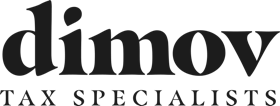Form 3115 Depreciation Catch-Up for Rental Properties and Change of Depreciation Method (MTM, Accrual to Cash, and Vice Versa)
Introduction
Managing rental properties involves numerous responsibilities including maintaining accurate financial records and ensuring compliance with tax regulations. For property owners and businesses, one critical aspect of this compliance is the appropriate accounting for depreciation. Over time, errors or outdated methods of depreciation can lead to inaccuracies in financial statements and tax filings. Fortunately, the IRS provides a solution through Form 3115, “Application for Change in Accounting Method.”
Form 3115 allows taxpayers to request approval from the IRS to change their accounting method. This change can include correcting depreciation errors for rental properties, transitioning to different depreciation methods or shifting between accrual and cash accounting methods. Properly filing Form 3115 ensures that taxpayers can align their financial practices with current regulations, potentially reducing their tax liabilities and improving financial accuracy. For more details about Form 3115, please visit our article prepared by visiting this page.
In this article, we will be specifically focusing on the depreciation catch up for rental properties and the process of changing depreciation methods.
Depreciation Catch-Up for Rental Properties
Depreciation catch-up for rental properties refers to the process of recalculating and claiming missed or incorrect depreciation deductions for rental property assets in previous tax years. This often occurs when property owners discover that they have either not claimed the appropriate amount of depreciation or have used an incorrect method of depreciation for their rental properties.
Key aspects of depreciation catch-up for rental properties include:
- Depreciation: Depreciation is the process of allocating the cost of a tangible asset over its useful life. For rental properties, this means spreading the cost of the property and its improvements over a specified period, typically 27.5 years for residential rental properties and 39 years for commercial properties.
- Missed or Incorrect Depreciation: Rental property owners may miss depreciation deductions or use an incorrect method due to oversight, lack of knowledge, or incorrect advice. This results in either overpaying taxes or not optimizing tax deductions.
- Form 3115: To correct depreciation errors, property owners must file Form 3115, “Application for Change in Accounting Method.” This form allows taxpayers to request a change in their accounting method, including methods for depreciation, and to make a Section 481(a) adjustment which accounts for the cumulative effect of the change in accounting method on prior years.
- Section 481(a) Adjustment: This adjustment is crucial as it reconciles the differences between the previous and new accounting methods. It ensures that all missed depreciation deductions are accounted for in the year of change and prevents duplication or omission of deductions. For more information, you can visit the relevant article by clicking here.
- Regulatory Guidance: The process is governed by various sections of the Internal Revenue Code (IRC) and Treasury Regulations, including sections 167, 168, and 481. Revenue Procedures, such as Rev. Proc. 2022-14, provide detailed instructions on making accounting method changes, including changes in depreciation methods.
Process Steps for Depreciation Catch-Up
- Identification of the Error: It should be determined if depreciation has been missed or incorrectly calculated in prior years.
- Calculating the Correct Depreciation: The correct amount of depreciation should be recalculated using the appropriate method.
- Preparation of Form 3115: Form 3115 must be completed and filed to request a change in accounting method.
- Section 481(a) Adjustment: The Section 481(a) adjustment should be calculated and applied to account for the cumulative missed or incorrect depreciation.
- Filing with Tax Return: Form 3115 must be attached to the tax return for the year of change.
Before we start the change of depreciation method, we would like to indicate that Dimov Tax provides comprehensive services for depreciation catch up for rental properties:
- Assessment and Calculation: Evaluating the client’s rental property depreciation to identify missed or incorrect deductions and recalculating the correct amounts.
- Form Preparation: Preparing and filing Form 3115 to request a change in accounting method and ensuring compliance with IRS requirements.
- Section 481(a) Adjustment: Calculating the Section 481(a) adjustment to reconcile past depreciation errors.
- Tax Return Assistance: Including the necessary forms and adjustments in the client’s tax return to reflect the corrected depreciation amounts.
- Consultation and Advice: Providing ongoing consultation to ensure that future depreciation is calculated and claimed correctly.
Change of Depreciation Method (MTM, Accrual to Cash, and Vice Versa)
The process of changing depreciation methods and accounting methods is a critical aspect of managing business and rental property finances. Form 3115 “Application for Change in Accounting Method” allows taxpayers to request IRS approval for these changes. Below is an explanation of key aspects of changing depreciation methods including Mark-to-Market (MTM) and shifting between accrual and cash methods.
Change of Depreciation Method
Depreciation Methods
- Straight-Line Method: This method spreads the cost of an asset evenly over its useful life.
- Declining Balance Method: This accelerated depreciation method writes off more depreciation in the earlier years of an asset’s life.
- Sum-of-the-Years’-Digits Method: Another accelerated method that applies a higher depreciation rate at the start and decreases it over time.
- Units of Production Method: Depreciation is based on the asset’s usage, activity or units of production.
When changing from one depreciation method to another, a taxpayer must file Form 3115 to get IRS consent. This process often involves calculating a Section 481(a) adjustment to reconcile past depreciation with the new method.
Mark-to-Market (MTM) Method
The Mark-to-Market (MTM) method values assets at their fair market value at the end of each tax year. This method is primarily used by traders in securities or commodities who elect this method under Section 475 of the Internal Revenue Code (IRC). The key aspects include:
- Election: Taxpayers must elect the MTM method by filing the appropriate statement with their tax return.
- Fair Market Value: Assets are marked to their fair market value at the end of the tax year, recognizing any gains or losses in that year.
- Consistency: Once elected, the MTM method must be applied consistently to all applicable assets.
- Revocation: To revoke the MTM method, IRS approval is required.
Accrual to Cash Method and Vice Versa
Switching between the accrual and cash methods involves changing the timing of income and expense recognition. The key differences are:
- Income is recognized when earned.
- Expenses are recognized when incurred.
- Provides a more accurate picture of financial position.
- Income is recognized when received.
- Expenses are recognized when paid.
- Simpler and often preferred by small businesses.
To change from the accrual to the cash method or vice versa, Form 3115 must be filed, detailing the nature of the change and including a Section 481(a) adjustment if applicable.
Key Aspects of Changing Accounting Methods
Section 481(a) Adjustment
This adjustment ensures that the change in accounting method does not result in omission or duplication of income or expenses. It reconciles the cumulative differences between the old and new methods, spreading the adjustment over several tax years to mitigate the impact on taxable income.
Revenue Procedures
The IRS provides detailed guidance on the procedures for changing accounting methods, primarily through Revenue Procedures such as Rev. Proc. 2015-13, Rev. Proc. 2022-14, and Rev. Proc. 2023-11. These documents outline:
- Automatic vs. Non Automatic Changes: Automatic changes follow a streamlined process without a user fee while non automatic changes require a more detailed application and a user fee.
- Eligibility: Specific criteria must be met to qualify for either automatic or non automatic change procedures.
- Filing Requirements: Detailed instructions on completing and filing Form 3115 including necessary attachments and calculations.
Process Steps for Filing Form 3115
- Determination of the Eligibility: It should be verified if the change qualifies for automatic approval or requires non automatic approval.
- Completing Form 3115: Comprehensive information about the current and proposed accounting methods should be provided and the Section 481(a) adjustment should be calculated.
- Submitting the Application: Form 3115 must be attached to the tax return and a copy must be filed with the IRS National Office.
- Follow-Up: Any additional IRS requests should be responded to and further information should be provided if needed.
Services Provided by Dimov Tax & CPA Services
Dimov Tax & CPA Services offers expert assistance in managing changes in accounting methods, ensuring compliance and optimizing tax outcomes. Our services include:
- Eligibility Assessment: Determining the appropriate procedure for the desired accounting method change.
- Form Preparation: Accurately completing Form 3115 and supporting documents.
- Section 481(a) Adjustment Calculation: Ensuring precise calculations to minimize tax impact.
- Submission Guidance: Assisting clients in navigating the submission process to ensure timely and correct filing.
- Ongoing Support: Providing continued assistance with any IRS inquiries or additional information requests.
By understanding and utilizing the provisions of Form 3115, property owners and businesses can effectively manage their financial reporting and tax obligations, making informed decisions about their accounting methods.


